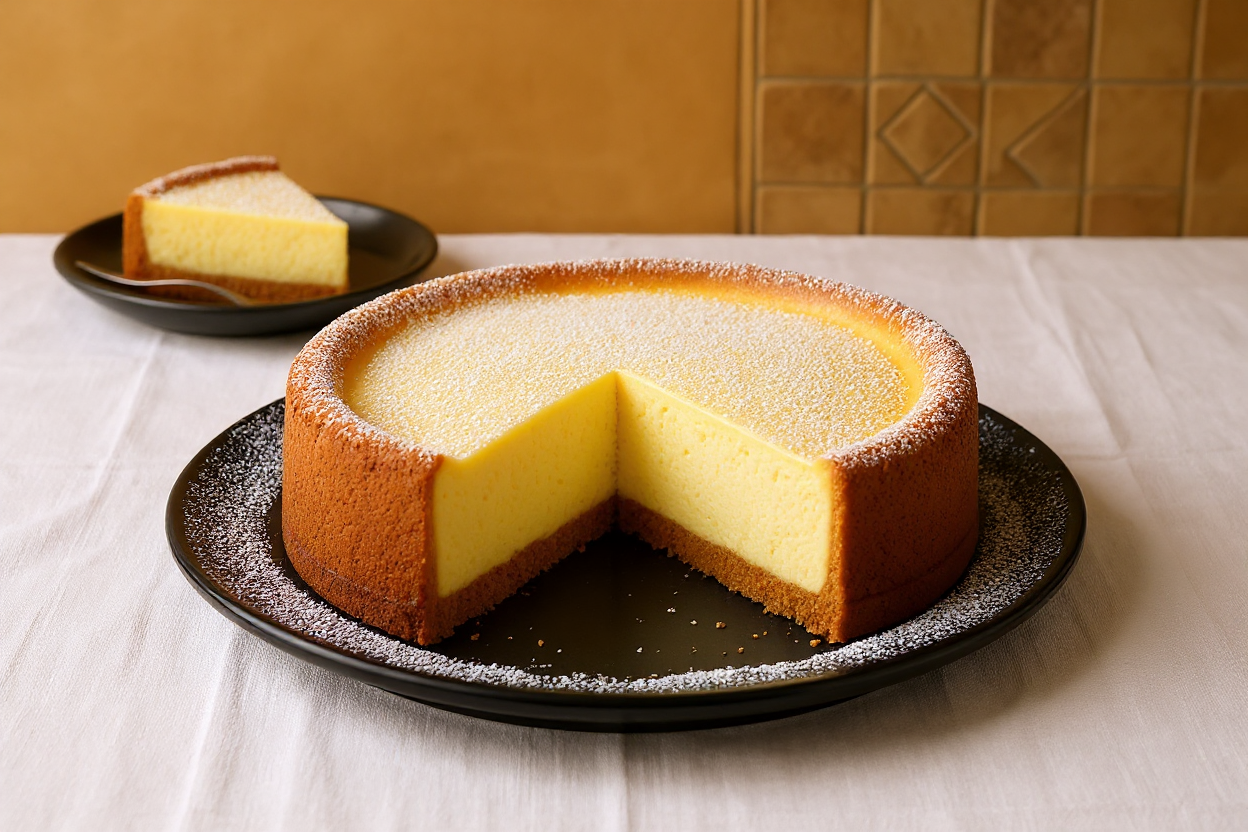Ingredients
Equipment
Instructions
- Drain Ricotta:Place ricotta in a cheesecloth-lined sieve or colander over a bowl. Let drain in the refrigerator for at least 2–4 hours or overnight.
Crust
- Preheat oven to 325°F (160°C).
- Mix graham crumbs, sugar, and melted butter in a bowl.
- Press into the bottom (and slightly up the sides) of the springform pan.
- Bake for 10 minutes, then cool slightly.
Filling
- In a large bowl, beat the ricotta until smooth.
- Add sugar, flour, and zest. Beat until creamy.
- Add eggs one at a time, mixing well after each.
- Stir in vanilla, almond extract (if using), and cream.
- Fold in chocolate chips or peel if using.
Bake
- Pour filling over crust and smooth the top.
- Wrap pan in foil and bake in a water bath to prevent cracks. (Optional but recommended)
- Bake for80-90 minutes, or until set around the edges but still slightly jiggly in the center.
- Turn off the oven and let it sit inside for 10 minutes with the door cracked.
- Cool completely on a wire rack. Refrigerate for at least 3 hours, preferably overnight.
Notes
Drain the Ricotta Well:
Ricotta can be watery, which affects texture. Drain it overnight in a cheesecloth-lined sieve or use full-fat, well-strained ricotta to prevent a soggy or grainy filling. Room Temperature Ingredients:
Let eggs, ricotta, and cream come to room temperature before mixing. This creates a smoother, more cohesive batter. Don’t Overmix:
Overmixing adds too much air and can cause cracks. Mix until just combined for a stable, creamy filling. Bake Low and Slow:
Baking at a lower temperature (around 325°F / 160°C) helps the cheesecake set evenly without browning too much or cracking. Use a Water Bath (Optional but Helpful):
Wrapping your pan in foil and placing it in a hot water bath helps regulate heat, minimizing cracks and ensuring even baking. Let It Cool Gradually:
Cool the cheesecake in the oven with the door cracked for 10–15 minutes before transferring to a wire rack. Sudden temperature changes can cause it to deflate or crack. Chill Before Serving:
For best texture and flavor, refrigerate the cheesecake for at least 4 hours — overnight is ideal. It firms up beautifully and slices cleanly when fully chilled. Use a Springform Pan:
A springform pan makes removal and serving much easier — especially for delicate cheesecakes.
Ricotta can be watery, which affects texture. Drain it overnight in a cheesecloth-lined sieve or use full-fat, well-strained ricotta to prevent a soggy or grainy filling. Room Temperature Ingredients:
Let eggs, ricotta, and cream come to room temperature before mixing. This creates a smoother, more cohesive batter. Don’t Overmix:
Overmixing adds too much air and can cause cracks. Mix until just combined for a stable, creamy filling. Bake Low and Slow:
Baking at a lower temperature (around 325°F / 160°C) helps the cheesecake set evenly without browning too much or cracking. Use a Water Bath (Optional but Helpful):
Wrapping your pan in foil and placing it in a hot water bath helps regulate heat, minimizing cracks and ensuring even baking. Let It Cool Gradually:
Cool the cheesecake in the oven with the door cracked for 10–15 minutes before transferring to a wire rack. Sudden temperature changes can cause it to deflate or crack. Chill Before Serving:
For best texture and flavor, refrigerate the cheesecake for at least 4 hours — overnight is ideal. It firms up beautifully and slices cleanly when fully chilled. Use a Springform Pan:
A springform pan makes removal and serving much easier — especially for delicate cheesecakes.
